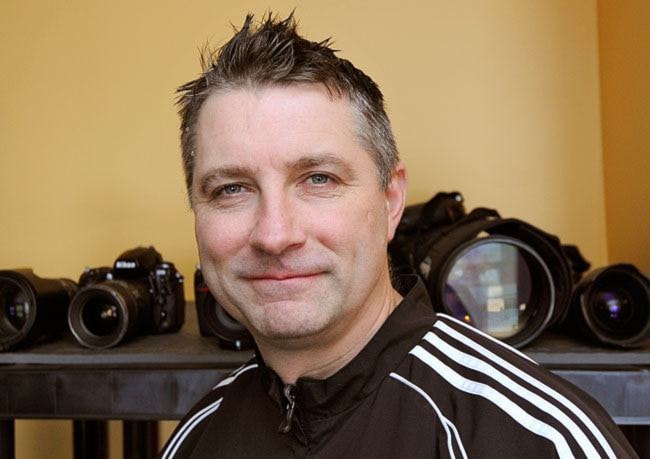Deep in the remote wilderness of the sacred Ni’iinlii Njik Territorial Park, a remote, fly-in area between Dawson City and Old Crow, Peter Mather waited for something special.
The Whitehorse photographer put his camera in an underwater housing and placed it next to a pile of branches in the Fishing Branch River.
The chum salmon swim from the Bering Sea, more than 1,600 kilometres away, to spawn and die in the river’s crystal clear waters each fall.
Hidden in a viewing area eight metres away, his hands clasped around a remote trigger, Mather and his guide carefully tracked the patterns of a grizzly sow and her cub.
The pair had been walking up and down the shoreline every three hours, looking for fish.
It took a few tries, but Mather finally captured the moment when the mother approached his camera and was about to sink her teeth into a fish.
The picture, which Mather titled “What’s This” because of the bear’s inquisitive look, was shortlisted last month for the most prestigious wildlife photography competition in the world.
He’s one of 50 finalists for the Wildlife Photographer of the Year People’s Choice Award, presented by London’s Natural History Museum and the BBC.
The award, introduced for the first time this year, is presented in honour of the competition’s 50th anniversary.
It was one of 20 shots Mather submitted to the competition, which features 10 adult categories and four special awards.
The finalists were picked from among more than 41,000 entries.
Mather said it took a lot of patience - five days’ worth - to get the shot he wanted.
“A lot of wildlife photography is just waiting for something special to happen,” he said.
“In this park there are all these bears everywhere, it gets so cold, there’s snow on the ground and they’re covered in ice. It’s a really unique place in the whole world.
“We just had to set up, wait, adjust and retry until we got it right.”
Mather was inspired to get into photography 20 years ago after seeing a slideshow on the Peel watershed by Ken Madsen.
He began working with Madsen on environmental issues like the Arctic National Wildlife Refuge and now devotes two-thirds of his time to photography.
There are three important keys to becoming a successful wildlife photographer, he said: patience, persistence and passion.
That’s because you’re not always guaranteed to get the shot you’re looking for.
Mather and his father went up the Dempster Highway in January to photograph caribou, part of a long-term project.
They spent 10 days sleeping in a snowmobile trailer, which Mather described as “dark and depressing.”
“I didn’t get a single good shot,” he said.
“But then I went back in March, for eight days, and got five really good ones. That’s just the way it rolls sometimes. You have to be pretty persistent sometimes because it’s easy to give up after 10 days.”
After 20 years of taking pictures, Mather said wildlife photography has changed the way he sees the world.
Although he grew up hunting and believes it’s important for people to get out on the land and hunt their food, he strongly opposes sport hunting.
“Killing animals like wolves and bears, for fun, is something I really struggle with now,” he said.
“You spend time with these animals. It’s hard to imagine someone could come along in five minutes and shoot it because they want to put something cool on their wall.”
Mathers recounted the story of his favorite picture, one of a black bear cub and its mother coming out of a den last spring.
The cub came out and was screaming like a baby, Mathers said.
The mother, beside it, was clearly tired and deflated.
“They were just like two humans,” he said.
“It was just like a mother and her newborn baby. Then you realize that someone could come along and shoot this bear. That’s the biggest thing that changed my view of the world.”
The winning images from the competition will be announced on Oct. 21.
The Wildlife Photographer of the Year exhibition will go on display at the Natural History Museum in London on Oct. 24 before embarking on an international tour.
Contact Myles Dolphin at
myles@yukon-news.com
